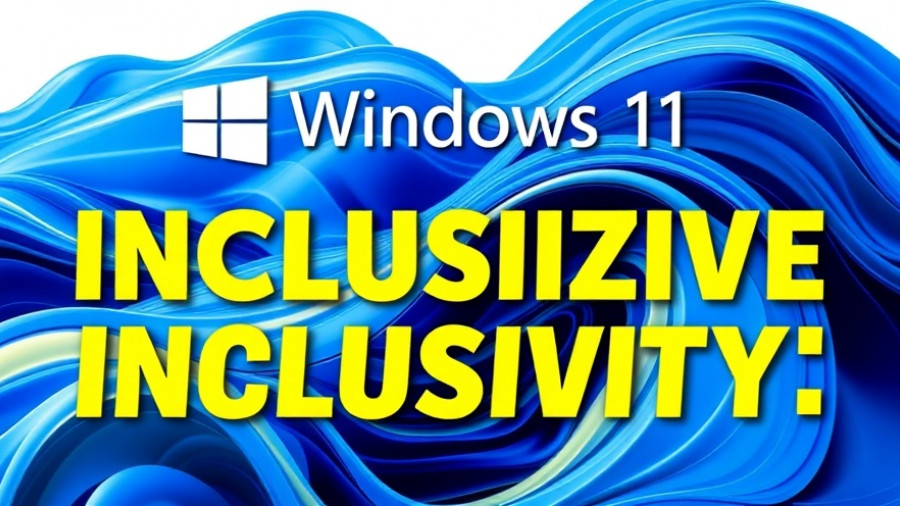
Accessibility Features: A Game Changer in Windows 11
In a world where technology is an integral part of daily life, accessibility remains a significant concern for those with varying conditions and challenges. Windows 11 is leading the charge with a suite of built-in accessibility features that not only cater to individuals with specific needs but also enhance the overall user experience for everyone. This article delves into these features, illustrating their importance and potential impact.
In '8 Accessibility Features that make Windows 11 Better for Everyone!', the discussion dives into the revolutionary tools introduced in Windows 11, prompting a deeper analysis of their significance.
Transforming User Experience with Personalization
One standout feature is the customizable mouse pointer, allowing users to change its size and color. For those who may struggle to see a standard cursor, this personalization can significantly improve navigation, enhancing productivity and reducing frustration. By simply accessing the settings, users can select the mouse pointer style that suits them, ensuring that this small change can lead to a more enjoyable computing experience.
Boosting Visibility with Text Cursor Adjustments
Moving beyond the mouse pointer, Windows 11 also introduces a text cursor indicator, a crucial addition for users dealing with long documents or dense text. By increasing the size and changing the color of the text cursor, individuals can quickly locate it, thereby streamlining their workflow. This seemingly minor tweak offers major benefits, especially for those who often need to skim through extensive content.
Narration Technology: A Revolutionary Tool for Visual Impairment
For users with visual impairments, the Narrator feature is nothing short of revolutionary. It reads aloud text and describes screen elements, making interactions accessible. With a simple keyboard shortcut, users can toggle this feature on or off without diving deep into settings, emphasizing usability and efficiency. This goes beyond traditional screen readers by offering real-time descriptions of videos, photos, and more, allowing equal footing in an increasingly visual digital landscape.
Enhancing Communication for the Hearing Impaired
Audio notifications are crucial for all users, yet those with hearing difficulties often require solutions tailored to their needs. Windows 11 brings a visual element to audio notifications through the ability to flash the screen or title bar. This simple feature can help keep users informed without relying solely on sound, making technology more inclusive.
The Future of Interaction: Voice Access Technology
Voice Access is an impressive tool that enables users to interact with their devices entirely through voice commands. This feature takes hands-free computing to another level, proving invaluable for individuals with mobility issues. By controlling a computer without needing a mouse or keyboard, users gain increased independence and efficiency. As voice recognition technology continues to advance, the potential for creating a fully accessible user environment will grow exponentially.
Conclusion: Why Accessibility Features Matter to Everyone
In essence, Windows 11's accessibility features are crucial not only for users with disabilities but also for a broader range of individuals. These tools not only promote inclusivity but also enrich the overall computing experience. As technology evolves, it becomes vital that those of us not facing specific accessibility challenges recognize the value and necessity these features bring to a wide audience.
As we look forward, understanding and leveraging innovative tools in technology is essential. While Windows 11 sets a commendable standard, the accessibility discussion must remain prominent as we navigate future improvements in tech interfaces.
 Add Row
Add Row  Add
Add 




Write A Comment